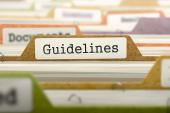New AF Guideline Emphasizes Early Rhythm Control, Elevates Ablation and LAAO
The document also introduces a classification scheme that moves beyond AF duration to emphasize the complexity of the disease.

The US atrial fibrillation (AF) guideline has received its first full update in nearly a decade, providing a new staging system, an emphasis on early rhythm control, and upgraded recommendations for catheter ablation and left atrial appendage occlusion (LAAO), among numerous other changes.
US societies, including the American College of Cardiology (ACC), the American Heart Association (AHA), and the Heart Rhythm Society (HRS), last issued a full guideline on the management of AF in 2014, with a focused update following in 2019. For this newest iteration, those groups were joined by the American College of Clinical Pharmacy (ACCP).
Over the last decade, there have been advances in the understanding of the AF disease process—for example, it’s more complex than a pure rhythm abnormality—and in technologies used to treat it, noted José Joglar, MD (UT Southwestern Medical Center, Dallas, TX), chair of the guideline-writing committee.
That spurred the creation of a new classification system that looks beyond the duration of AF. The scheme has four broad stages, with management of risk factors emphasized at each step:
- Stage 1: At risk for AF (presence of risk factors associated with arrhythmia)
- Stage 2: Pre-AF (evidence of structural or electrical findings that make a patient susceptible to AF)
- Stage 3: AF (spanning patients with paroxysmal, persistent, and long-standing persistent AF, as well as those who have undergone successful catheter ablation)
- Stage 4: Permanent AF (no further attempts at rhythm control after a discussion between the patient and clinician)
“That’s a big change,” Joglar told TCTMD. “The new classification emphasizes that this is a complex disease that requires a multidisciplinary approach to managing patients with this problem versus the old classification that just emphasized the rhythm alone and its duration.”
Pushing for Early Rhythm Control, Upgrading Interventions
A key focus of the updated guideline, which was co-published online Thursday in the Journal of the American College of Cardiology and Circulation, is on early rhythm control. The longer a patient remains in AF, the harder it is to get rid of it, Joglar pointed out, adding that studies like EAST-AFNET 4 have shown that attacking that arrhythmia early on helps stave off downstream cardiovascular events.
One method for achieving rhythm control—catheter ablation—has received an upgrade in the latest guideline. Previously, catheter ablation was deemed a reasonable initial rhythm-control strategy before use of antiarrhythmic drugs in patients with recurrent symptomatic paroxysmal AF (class 2a recommendation).
Now, there’s a class 1 recommendation stating that in selected patients (generally younger with fewer comorbidities), ablation is useful as a first-line therapy to improve symptoms and reduce disease progression. This strengthened recommendation is based on the results of trials like EARLY-AF and its extended follow-up study PROGRESSIVE-AF showing that ablation is superior to drug therapy for rhythm control.
Moreover, ablation also gained a class 1 indication in the setting of heart failure with reduced ejection fraction, having been shown to improve symptoms, quality of life, ventricular function, and cardiovascular outcomes in this population across multiple studies.
We’re hoping that this document not only advises on how to best manage these patients, but also opens the door for future conversations and research. José Joglar
In the realm of interventions, LAAO, too, was upgraded, moving from a class 2b to a class 2a indication for patients with a moderate-to-high risk of stroke and a contraindication to long-term oral anticoagulation based on additional data supporting the efficacy and safety of the procedure for stroke prevention.
Research has shown that newer-generation LAAO devices are more effective and safer than earlier iterations, Joglar said. “The risk-benefit ratio then changes towards the use of these devices in a more favorable way.”
‘A One-Stop Resource’
Reflecting on the breadth of the document, Joglar said, “we’re trying to provide advice and guidance to physicians across the spectrum of atrial fibrillation management beyond just the big-ticket items.”
Compared with prior documents, the authors provide more-prescriptive guidance when it comes to lifestyle modification. Rather than asking patients to lose weight and exercise more, for instance, clinicians can point to class 1 guideline recommendations for patients with overweight or obesity to lose at least 10% of body weight to reduce AF symptoms, burden, recurrence, and progression to persistent AF and to aim for a weekly target of 210 minutes of moderate-to-vigorous exercise to improve AF outcomes, functional capacity, and quality of life.
In addition, the guideline introduces more flexibility when it comes to using risk scores and additional factors to assess a patient’s risk of stroke or systemic embolism.
“Recommendations for anticoagulation are now made based on yearly thromboembolic event risk using a validated clinical risk score, such as CHA2DS2-VASc,” Joglar et al write. “However, patients at an intermediate annual risk score who remain uncertain about the benefit of anticoagulation can benefit from consideration of other risk variables to help inform the decision, or the use of other clinical risk scores to improve prediction, facilitate shared decision-making, and incorporate into the electronic medical record.”
New advice and discussion have been introduced in several other areas as well, Joglar said, pointing to the use of anticoagulation in patients with device-detected AF; management of AF in patients with heart failure; and treatment of the arrhythmia in the setting of surgery or other medical interventions.
“We’re hoping that the readers see this as a one-stop resource for managing patients with atrial fibrillation,” Joglar said, noting that there will be tools—such as smartphone apps—that will allow clinicians to access the guideline at the point of care.
And in a broader sense, Joglar said the guideline writers hope to elevate conversations about lifestyle modification between patients and their physicians and about enhancing the use of risk scores for stroke prevention. He anticipates, too, that the strengthened recommendations for catheter ablation will lead to greater use of the intervention.
But overall, he said, “we’re hoping that this document not only advises on how to best manage these patients, but also opens the door for future conversations and research.”
Todd Neale is the Associate News Editor for TCTMD and a Senior Medical Journalist. He got his start in journalism at …
Read Full BioSources
Joglar JA, Chung MK, Armbruster AL, et al. 2023 ACC/AHA/ACCP/HRS guideline for the diagnosis and management of atrial fibrillation. J Am Coll Cardiol. 2023;Epub ahead of print.
Disclosures
- Joglar reports no relevant conflicts of interest.





Comments